#advice for artists
Text
(via artmaker223)
#how to draw hands#art tips#art advice#tiktok#gordon ramsay#art appreciation#hands#how do you draw hands#art help#drawing advice#drawing tutorial#drawing tutorials#drawing help#art reference#art references#artist advice#advice for artists#art tutorial#how to draw
2K notes
·
View notes
Text

#academia#chaotic academia#classic academia#dark academia#literature#aesthetic#english literature#uni#college#lit#calling all writers#writer#writers on tumblr#writerscommunity#writers and poets#artists on tumblr#artist advice#small artist#calling all artists#poets#writer advice#poet#sad poetry#poetsandwriters#poets on tumblr#poets corner#dead poets society#advice#life advice#advice for artists
144 notes
·
View notes
Text
Advice for artists and non-artists but mainly just artists
You know how you do a thing for so long that it’s becomes super mundane and insignificant to you, like when you’re sewing something you just do a basic stitch and struggle to tie a standard knot at the end. But you don’t do this often enough for it to stand out to you.
You’re an artist, hey maybe even a professional one, and you’ve been doing your art a certain way for a long time. You use pose references and look up environment pictures to reference. But you still draw shoes without a reference or you draw clothes without any detailed folds.
At various points in my art journey I tried using tutorials, resources, and step by step guides for drawing certain things, be that nature brushes, drawing noses front-on, etc. and my skills at the time were kinda basic so I could never really pull off the tutorials in a way that satisfied me. I then went years just improving on broad areas like perspective and posing, focusing more on the overall composition than the minor details. But one day, years later, I got bored and decided to look up how to draw clothing folds
On the left of the green line is some previous work, on the right was two pieces I drew after I heavily referenced cloth physics

Ignore the shading, lighting, colors, etc. the stuff on the right definitely has way better flow than the stuff on the left.
Now it wasn’t like a “wow I used a reference and now I’m a master” situation, there was an adjustment period with some less than stellar examples

But when I created those first 2 folds it was like a fucking switch was flicked in my head and I’ve been improving ever since. I am immensely grateful that I just happened to go looking for reference photos because holy shit something as simple as improving my clothing folds massively boosted my confidence in my work.
Something I’ve noticed after I followed tutorials is that during the adjustment period, while the first couple of pieces are very reminiscent of the source tutorial, they start to get a little too far off and I stop referencing the tutorial and start doing my own thing (for better or for worse), but there’s then a period afterwards where I go back (maybe after re-watching the original tutorial) and develop it more into my own style.
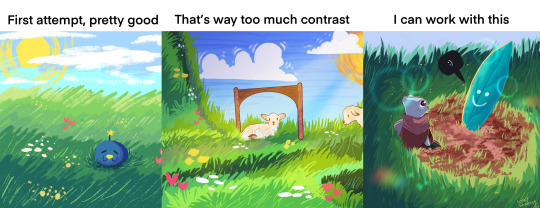
Here’s a graph to better explain my thought process

Here’s another gun to the head reminder to use references. Recently I was drawing shoes for a character and I have a pretty consistent method of drawing shoes (consistent, not good).
But I wanted it to look more rugged so I looked up an image of a hiking boot and guess at what point in this timelapse that the reference was pulled up
I had for years tried using tutorials and reference photos but the process never really clicked for me. But over the years I have improved my technical skills and I believe that those improvements and all that practice made it way easier for me to understand and replicate tutorials, i understand now how the specifics of certain things like shading and depth work, picking up new skills that are still in the area I work in became way easier.
But Im obviously still finding areas in my art by random chance that I can improve on. Because I don’t think about those parts anymore, they’re in the background of my design process.
This is where my advice to non-artists comes in. Look up tutorials. For anything. You know earlier when I mentioned sewing? Look up a guide on stitching, I just learned today what a surgeons knot is despite having been hand stitching for years. You don’t know what you don’t know, you don’t seek out improvement when you don’t perceive the need to improve. Trust me, there’s always areas to improve but you are going to have to stretch your mind at some point to recognize them.
Everybody talks about how you should use tutorials and use references and all that, but I don’t think many people are going to research tutorials for things they don’t feel like they need improvement in.
.
Anyway that’s the end of my monthly psa
If something in this post confused you feel free to send me like an ask or a brick through my window with a note attached to it, I’m not picky.
#somewhat art related#art tutorial#art help#art advice#psa i guess#long post#no alt text#ask to tag#advice for artists
130 notes
·
View notes
Text

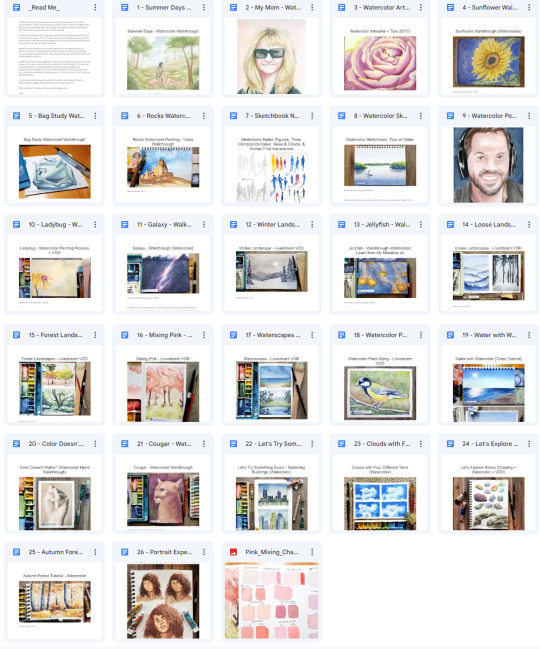
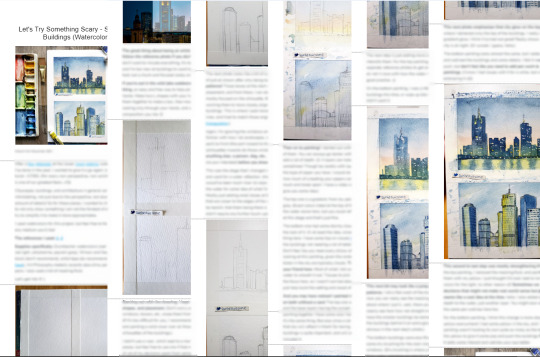
✨The entire tutorial and art demonstration blog archive for my watercolor work is here! See EXACTLY how I create my watercolor artworks, follow along with tutorials yourself, and get confident with your skills!
❤️Get it here!
Find more art tutorials and demonstrations in my shop here!
16 notes
·
View notes
Text
In which I talk about art block while carving a stamp
#my art#artists on tumblr#art block#advice for artists#eraser stamp#stamps#stamp making#wright art#video
5 notes
·
View notes
Note
What program/brushes do you use? I love the texture in your art
Thank you!! It took a lot of trial and error to get to where I currently am with rendering, so I’m really glad to hear someone notices and even likes it! 🥺🖤
The programme I use is Procreate for iPad!
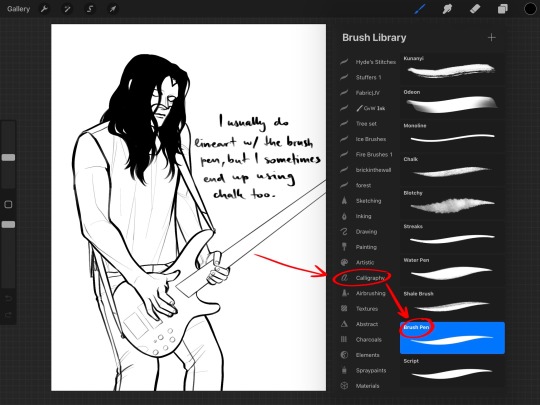
The brush I use for lineart is mostly the brush pen, found in the Procreate Calligraphy brush set. I find this one has the best fluidity and weight, while being very clear and soft. When I’m looking for a rougher line however, I will turn to the chalk brush from the same brush set.

The base colours are always set with the flat brush, found in the Procreate Painting brush set. I sometimes use the studio pen from the Inking brush set to make an outline and fill it in later, but that’s only when I’m feeling really nitpicky LOL

All the shading is done with the flat brush as well, but the highlights I do with the brush pen. The “highlights” here are the bass guitar strings and belt details, leather and metal shine, chain, and hair strand highlights.
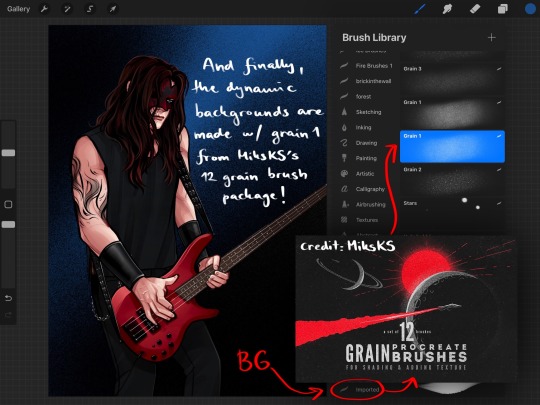
And finally, I achieve the dynamic backgrounds by using the grain 1 brush from MiksKS’s 12 Grain brush set (link here) It’s probably my most used out of all the brush sets I’ve got downloaded, I absolutely adore it! :D

And here is an example of the chalk brush in action! I absolutely love this brush when I’m trying to achieve rougher lines and textures. I love the grittiness and sharpness of it, while it holds the same weight and fluidity as the brush pen.
And while I didn’t think it was relevant to your question, I’m adding it in as well just in case; when I’m making simple anatomical sketches I’ll usually use the flat brush, and when I’m making more detailed sketches I’ll use the brush pen :)
🖤 Hope you find this useful!! 🖤
#han rambles#brushes#advice#tutorial#art advice#art tutorial#my art#process#art process#art#artwork#digital art#illustration#digital illustration#digital painting#painting#artist#artists#artist advice#advice for artists#tips for artists#artist tips
85 notes
·
View notes
Text
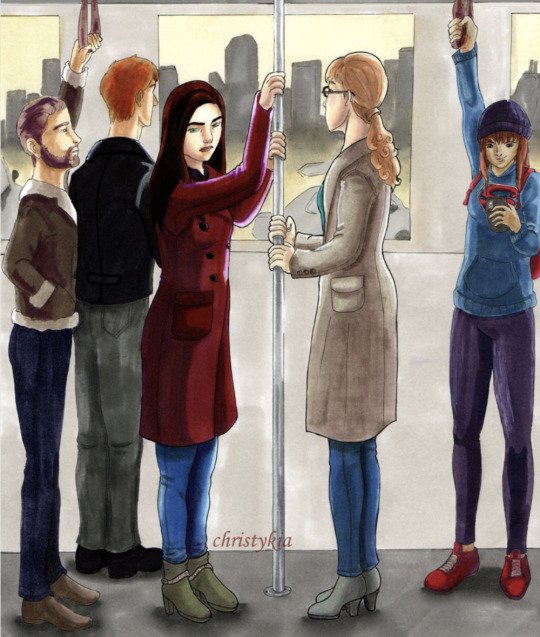
Today, we're shining the Batsignal on ChristyKia. ChristyKia has been delighting fans with her drawings of Supercorp and other pairings in the SG fandom as The Red Cape of K. Thanks for sharing your insights and techniques, ChristyKia!
Tell us a little about yourself. How long have you been creating fan art? What were some of your first subjects and what ships/characters in the SG universe have you illustrated?
Hello I'm Christykia. I've been creating fanarts for as long as I can remember. I was probably 6 or 7 when I drew my first Disney fanarts, then I continued with Dragon Ball Z, Yu-Gi-Oh and later Harry Potter, Naruto, Avatar the last Airbender and the Legend of Korra. As for Supergirl, so far I've drawn Supergirl, Sam and baby Ruby, Lena, Kelly as Guardian, Supercorp and Brainia
What are your favorite mediums to work with?
I'm a traditional artist and I love to work with alcohol markers and colored pencils
What kinds of scenes do you enjoy illustrating? Do you have any favorite tropes or themes? Imagery that you like to work with?
When I draw ships, I like illustrating fluff and domestic scenes or casual moments of life. I also occasionally like drawing short comics and nsfw scenes. When I draw single characters I tend to draw portraits
Any advice for aspiring fan artists?
Start with cheap mediums, learn the basics (like anatomy), use references, and draw as much as you can. Keep your beginner's drawings, they'll help you see how you've improved after a while and you can still use them in "draw it again" games years later.
Check out more of her work here!
https://theredcapeofk.tumblr.com/search/myart for Supergirl Fanarthttps://www.instagram.com/_christykia/ For everything else
47 notes
·
View notes
Text
does anybody have any actual helpful tips for improving in art. i feel like my art sucks rn. i know nothing about color theory, drawing folds, perspective, shape language, all that stuff and barely enough about anatomy. i feel like i know nothing about art and i feel like quitting. the thing is that i really love making drawings and i have many ideas i want to draw. i just cant draw it. i cant animate either. everyone around me just seems to get better while im getting worse. i hate this.
#tumblr help#please help#young artist#struggle#vent kinda#art block#art#artists on tumblr#small artist#queer artist#tips#help#drawing tips#tips for artists#i need to know#tips and advice#advice#advice for artists#artist advice#im desperate#vent post#vent#help plz#im struggling#mentally i am unwell#color theory#anatomy#shape language#perspective#anatomy drawing
13 notes
·
View notes
Photo

Have you ever tried this exercise?
#art hacks#tips for artists#advice for artists#artist support#improve your drawing#improve your art#artist advice#carini arts#Michael Carini#advice#diy#how to#artists on tumblr#artist#staff picks#education#for you#editors#curators
51 notes
·
View notes
Text
Sometimes sharing work online feels like a mosquito bite, where it itches and you have the urge to touch or scratch it even if you know it's better not to. You want to keep checking it.
People will see and reply to it in their own time, resist the urge to check, also resist the urge to edit you looked for spelling mistakes before you posted.
whats done is done, even if you buy a cat bed you don't choose where the cat sleeps. Put it into the world, let it go.
advice to myself.
#art#posting#putting it into the world#advice#advice for artists#if its bad#its allowed to be bad#im telling myself
2 notes
·
View notes
Text
Common perspective mistakes (proko)
#witchcraft!!!#art tips#art advice#tiktok#art appreciation#proko#how to draw#drawing advice#drawing tips#art help#drawing tutorial#drawing tutorials#drawing help#art reference#art references#artist advice#advice for artists#art tutorial#tiktok video#3d art#drawing mistakes#perspective#how to draw perspective
497 notes
·
View notes
Text
A tip on getting past a focus on perfection.
For some people, when they look down at their art they will see problems everywhere and try and fix every little thing that looks odd to them. This can be considered art blindness, it is caused when an artist has been staring at a drawing long enough that even if it looks good they will only see the flaws in it. I have always had a major issue with this and have had a tendency to even feel the need to make even my own watermark absolutely perfect. A way I've been trying to push through art blindness is drawing on paper with pen and nothing else. This may seem like it could be silly however with pen it forces you to work with your mistakes instead of merely erasing and trying again, it causes you to need to use a different sketch book or piece of paper if you wanna make a minor change. Because of that fact it allows you to figure out how to focus on how to improve your drawing and to work with the mistake instead of around it; or in other words it forces you to trust the process. Here are some examples of things I drew utilizing this art exercise. A lot of these will later be made digital and I will color them in. These are far from perfect and I can definitely see some flaws especially in anatomy however this gave me a chance to actually finish some drawings and try to work on improving any mistakes I made and learn from them so I can try and avoid them in the future. This technique can be very infuriating but your end product whether just a sketch, doodle, or finished piece of art shows you put effort into improving and whoever tries I'm proud of. Even if someone rages or quits before finishing the drawing I am also proud of you for atleast trying. Those who don't have motivation to do it but are thinking about doing it? I am also proud of you. If anyone utilizes this exercise be sure to respond to this post or at me in your post. <3

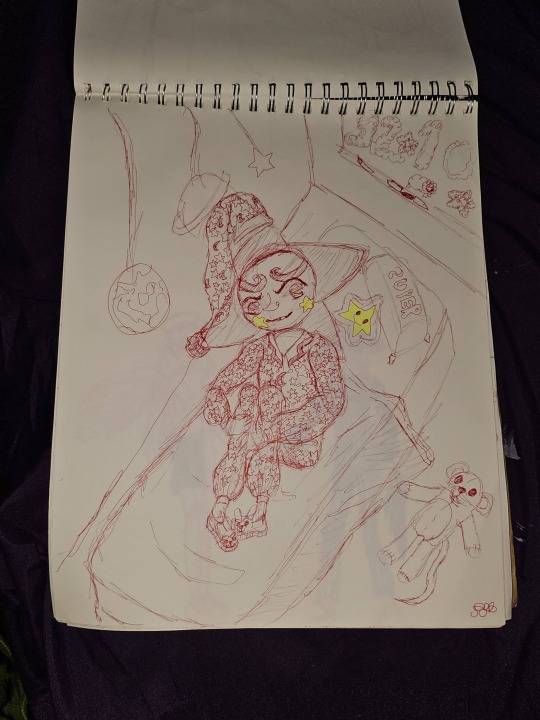
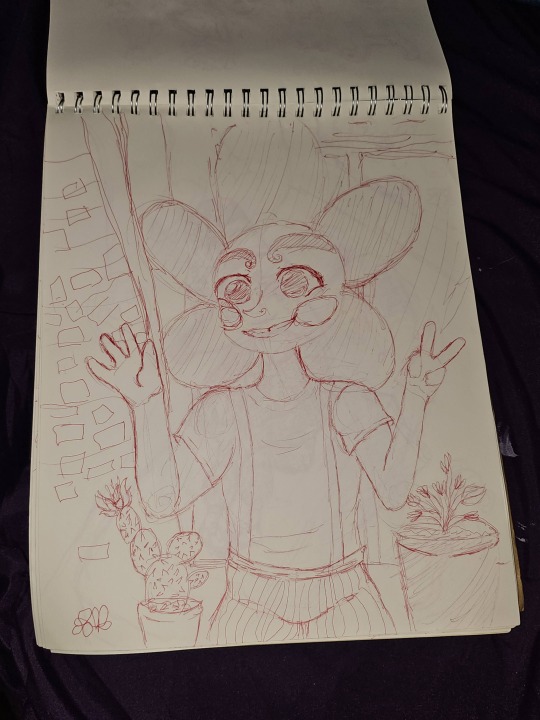


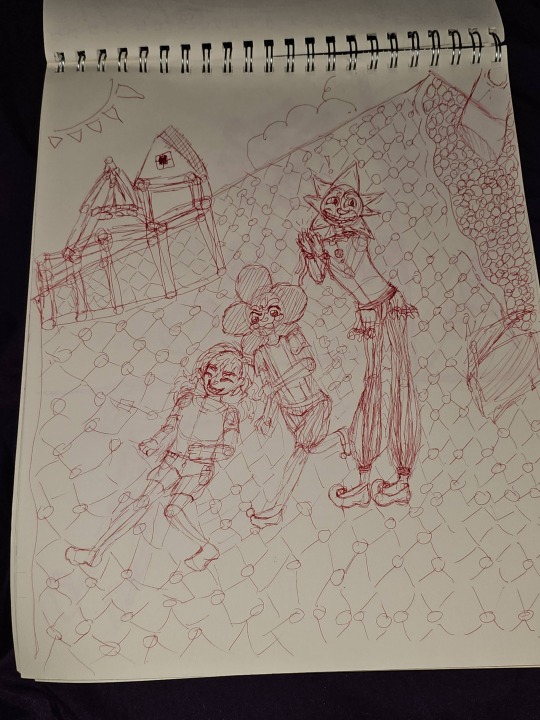
#art problems#artists on tumblr#art tips#art help#art advice#digital artist#traditional drawing#traditional art#digital art#art practice#drawing tips#art hacks#advice for artists#beginner artist#art exercise#Art praise#pen art#pen drawing#pen sketch
6 notes
·
View notes
Text
Create dangerously, for people who read dangerously.
… Writing, knowing in part that no matter how trivial your words may seem, someday, somewhere, someone may risk his or her life to read them.
— Professor Edwidge Danticat
#advice for writers#advice for artists#writers on writing#quotes about writing#edwidge danticat#haitian-american writers#female writers#authors#black writers#feminist writers
2 notes
·
View notes
Text
I thought It was time to be open about toxic perfectionism and failure. 💙✨
#art advice#artist advice#artists on tumblr#new artist#art#advice for artists#enamel pins#hard enamel pin#hard enamel#jellyfish#manta ray#nudibranch#sea pancake#cute art
10 notes
·
View notes
Text
artists are stronger than a computer
art is inherently human
also you should add obnoxious amounts of watermarks
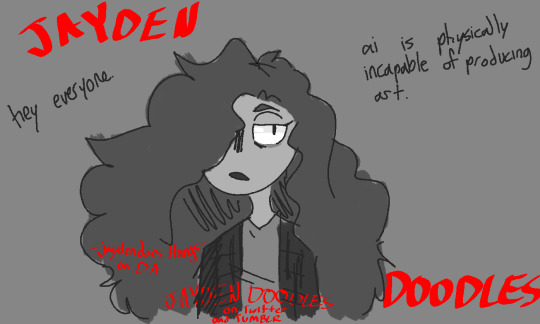
#ai art is bad#artists on tumblr#clip studio paint#advice for artists#also have a good day or night#tumblr tags are really fun to use
9 notes
·
View notes
Quote
If somebody gives you a really good critique or a really bad critique, all they’re doing is diagnosing something off in the energy of the art. If the critiquer has taste you agree with, maybe you should try to “fix it.” But only you will know the true answer to finish your art, no matter what they prescribe. Every once in a while they happen to say it is a great diagnosis, and miraculously, the medicine to cure the illness too.
Bud Smith, author of Teenager, interviewed by The Creative Independent
#bud smith#teenager#advice for writers#advice for artists#creative independent#constructive criticism#quote#quotes
4 notes
·
View notes